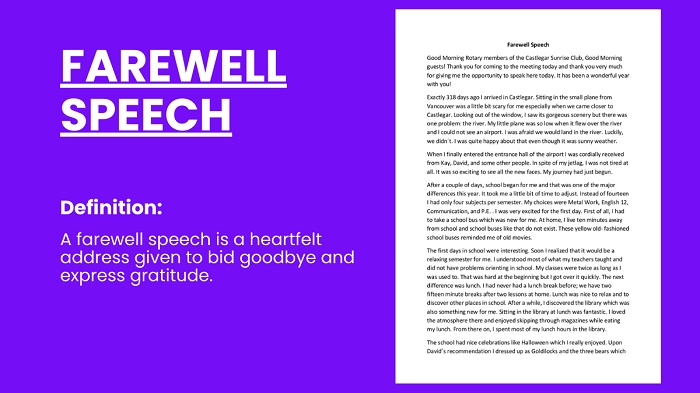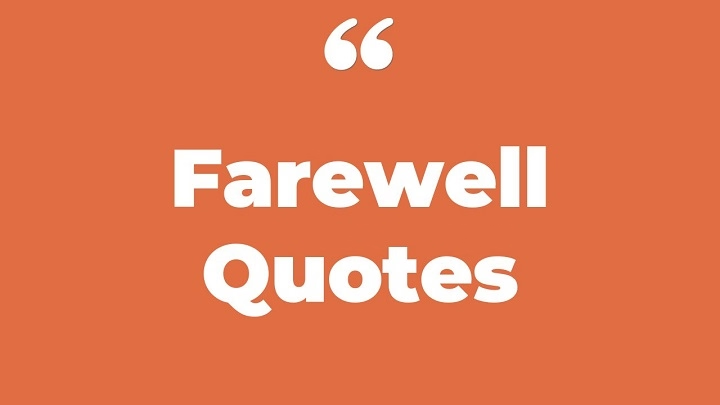Whether it’s a business conference, a school function, or a family celebration, farewell and welcome speeches are pivotal moments in every one of them. These talks are meant to show thanks, honor past successes, and greet fresh opportunities. A well-written speech will stay with your audience and help them feel appreciated and important.
Realizing the Value of a Farewell Welcome Speech
A farewell welcome speech should be crafted with awareness of the balance between bidding farewell and inviting fresh starts. The secret is to honor the efforts of people departing, reflect on memories, and generate excitement for what is yet to come. The tone and format of a farewell speech for a colleague or a welcome speech for a new team member should fit the occasion and the audience.
Essential Components of a Great Farewell Welcome Speech

Honor the Occasion
Starting with appreciating the importance of the event, a farewell welcome speech should begin by acknowledging the significance of the event. Whether it’s a graduation, retirement, or the beginning of a new chapter, outlining the goal of the event helps set the scene. This will assist the listeners in grasping the speech’s tone and background.
“We come here today not only to say goodbye but also to celebrate the road we have traveled and eagerly await the adventures ahead.”
Show Thanks and Admiration
A quality farewell speech expresses gratitude towards the individual or group being honored. Recognize their contributions and stress their successes. For a welcome speech, express enthusiasm and admiration for the new arrival, showing excitement about their potential.
“Your relentless commitment to excellence has helped shape this team, and we are grateful for it.”
Reflect on Memorable Moments
Recalling special events or memories ties the speaker to the listener emotionally. Share some poignant memories illustrating the person’s influence in a farewell. In a welcome speech, emphasize what distinguishes the new person and how they will add to the group dynamic.
“Your presence has truly made a difference in our lives, from the first project we worked on together to the countless laughs we shared.”
Share Hopes for the Future
A farewell speech should conclude with well wishes for the future activities of the person leaving. Similarly, a welcome speech should convey hope and inspiration, looking ahead to the opportunities that the future presents.
“We hope you succeed in every project you work on, and we eagerly await learning about your fresh achievements.”
Writing the Tone of Your Speech
The tone of your speech should align with the atmosphere of the gathering. If it’s a formal corporate farewell, a more professional tone would be suitable. On the other hand, a farewell for a friend or relative could be more laid-back and filled with anecdotes and humor. Similarly, the welcome speech should be kind, warm, and inviting.
For instance, a business farewell speech might sound something like:
“It is with mixed emotions that we say farewell to such a vital member of our team. Your leadership, dedication, and insight have been invaluable.”
Meanwhile, a family farewell speech might be more casual:
“Though we’ll miss you, we know you’re off to do wonderful things. Keep us updated, and don’t forget about us!”
The Role of Humor in Farewell Welcome Speeches
Humor, when applied thoughtfully, can be a powerful tool in a farewell welcome speech. A well-placed joke or lighthearted remark can bring a sense of joy and ease to the occasion. However, it’s essential that the humor fits the mood of the event and respects the emotions of the individuals involved.
“We will miss your terrible jokes and your relentless supply of snacks in the break room—but I guess we’ll have to survive without you!”
Steps to Writing a Farewell Welcome Speech

Know Your Audience
Before writing your speech, take some time to consider your audience. Are they coworkers? Friends? Family? Knowing your audience will help you tailor the tone, content, and humor of your speech. A speech for a corporate event will differ greatly from one at a casual family gathering.
Organize the Speech
A well-structured speech is easier for the audience to follow. Here’s a basic framework to consider:
- Introduction: Greet the audience and introduce the purpose of the speech.
- Main Body: Acknowledge the person leaving or being welcomed, share memorable moments, and express gratitude.
- Conclusion: Offer well wishes, thank the audience, and close the speech with an optimistic tone.
Customize the Speech
Customizing the speech is key to making it personal and impactful. The more specifically you can describe the person’s contributions or the significance of the event, the more powerful your speech will be. Including anecdotes, specific memories, and personalized comments will show that you truly care.
Practice Delivery
It’s not just about what you say, but how you say it. Practice delivering your speech with confidence, clarity, and emotion. Consider rehearsing in front of a friend or family member to get feedback. A heartfelt and well-delivered speech will leave a lasting impact.
Example of a Farewell Welcome Speech
Here’s an example of a farewell welcome speech that blends both aspects:
- “Good evening, everyone. Today, we are gathered to say farewell to one of the most remarkable people we’ve had the pleasure of working with. [Name], your time here has been nothing short of amazing, and we will miss your energy and passion.”
- “Your dedication has inspired us, and you have helped shape this team into what it is today. As we bid you farewell, we are excited for your future and the new roads you will travel. We look forward to following your success because we know you will do amazing things.”
- “While we say goodbye to one chapter, we are thrilled to welcome a new beginning. We are excited to have [New Person’s Name] join our team. We are confident that your experience and skills will bring a fresh perspective and a wealth of knowledge to this group.”
- “So, as we say goodbye and welcome new beginnings, let us cherish the memories we’ve made and look forward to the bright future ahead. Thank you.”
Advice on Polishing Your Farewell Welcome Speech
- Stay Positive: Focus on the positive aspects of the person’s contributions and the exciting future ahead.
- Be Genuine: Authenticity resonates with audiences. Don’t over-rehearse or make your speech sound overly scripted.
- Keep It Concise: Respect the time of your audience by keeping your speech clear and to the point.
- Practice: Rehearse your speech to ensure it flows smoothly and feels natural when delivered.
- Express Emotions: A farewell welcome speech should evoke emotions, whether it’s laughter, nostalgia, or excitement.
FAQs About Farewell Welcome Speeches
How should a farewell welcome speech begin?
Begin by greeting the audience and acknowledging the reason for the event, whether it’s a farewell or a welcome. Share a few words of appreciation and set the tone for the speech.
How long should a farewell welcome speech be?
A farewell welcome speech should be brief but impactful. Aim for 3-5 minutes, generally equating to around 500-600 words. Avoid rambling and keep the speech focused.
Can I add humor to my speech?
Yes, humor can make your speech more engaging, but ensure it’s appropriate for the audience and occasion. Be mindful of the tone and ensure that the humor doesn’t diminish the significance of the event.
How can I make my speech unforgettable?
Personalize your speech by sharing specific memories or qualities about the person leaving or the one being welcomed. Show genuine emotion, and avoid making your speech too generic.
Should I thank the audience at the end?
Yes, it’s always a great idea to thank the audience for their time and attention, and leave them with an optimistic or heartfelt note about the future.

